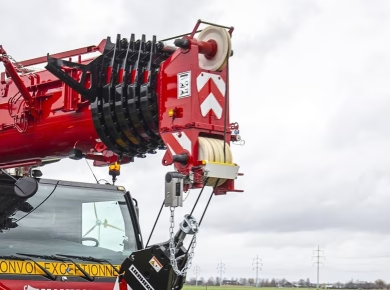When it comes to creating a productive and professional meeting environment, the importance of well-chosen furniture cannot be overstated. In particular, compact conference tables hold a significant position, especially in small meeting spaces. The right table can transform a cramped room into a functional workspace, accommodating both collaborative discussions and individual brainstorming sessions. This article delves into the many benefits and considerations surrounding compact conference tables, offering valuable insights for anyone looking to optimize their meeting area.
The Importance of Space Optimization
Small meeting spaces often pose unique challenges. The layout, the furniture, and even the decor need to work in harmony to create an inviting and functional atmosphere. A compact conference table is not merely a piece of furniture; it’s a strategic asset that can enhance the overall efficiency of meetings. By choosing the right size and style, you can maximize the usability of the space while ensuring that it remains professional and aesthetically pleasing.
When considering how to optimize your small meeting area, think about the flow of movement and interaction. A well-placed compact table can facilitate natural conversations and collaboration, encouraging participants to engage fully, regardless of the space constraints.
Choosing the Right Compact Conference Table
Selecting the appropriate table for your meeting space involves several factors, including size, shape, material, and functionality. Each element plays a crucial role in how the table integrates into your existing environment.
Size Matters
The size of the table should align with the dimensions of your meeting room. While it might be tempting to opt for the largest table that fits, this could hinder movement and make the room feel cramped. Instead, measure the space carefully and consider how many participants you want to accommodate. A table that comfortably seats four to six people can often be more effective than a larger one that leaves little room to move around.
Shape Considerations
The shape of the table can significantly impact the dynamics of your meetings. Round tables foster a sense of equality and encourage open discussion, making them ideal for brainstorming sessions. On the other hand, rectangular tables may be more suited for formal presentations or structured meetings. Consider the nature of your gatherings and select a shape that promotes the desired interaction styles.
Material and Durability
The material of your compact conference table should blend durability with aesthetics. Wood offers warmth and a classic look, while metal and glass can create a more modern, sleek appearance. Additionally, consider the ease of maintenance. Tables that can withstand wear and tear are essential in high-traffic areas, ensuring longevity and continued professional appeal.
Functional Features to Look For
Modern compact conference tables often come equipped with various features designed to enhance functionality. When shopping for your ideal table, keep an eye out for these practical options that can significantly improve your meeting experience.
Technology Integration
In today’s digital age, a compact conference table with integrated technology can be a game-changer. Look for tables that include built-in power outlets and USB ports, allowing participants to charge devices during meetings. Additionally, consider tables that can accommodate video conferencing technology. This feature is particularly valuable in a hybrid work environment, where remote participants need to feel included and engaged.
Mobility and Flexibility
Another crucial aspect of compact conference tables is their mobility. Tables with wheels or modular designs can be rearranged or stored away easily, allowing for versatile use of the space. This flexibility is especially beneficial in multifunctional environments where the meeting space may need to serve various purposes throughout the day.
Creating a Professional Atmosphere
The appearance of your meeting space can influence the perception of professionalism within your organization. A well-chosen compact conference table not only serves a functional purpose but also contributes to the overall aesthetic of the room.
Choosing the Right Decor
To complement your compact conference table, consider the surrounding decor. The right color palette, artwork, and lighting can significantly enhance the ambiance. Neutral tones tend to create a calming environment, while pops of color can energize the space. Natural light is also a crucial element; if possible, position your table near windows to take advantage of sunlight, fostering a more inviting atmosphere.
Personal Touches
Don’t underestimate the power of personal touches. Adding elements like fresh plants, tasteful artwork, or even a whiteboard can make the space feel more welcoming and conducive to creativity. These details can create a balance between professionalism and comfort, allowing participants to feel at ease during discussions.
Addressing Common Pain Points
As you consider outfitting your small meeting space with a compact conference table, you may encounter some common challenges. Addressing these concerns can lead to a more satisfying experience for everyone involved.
Limited Space for Materials
One frequent issue in small meeting spaces is the limited surface area for materials such as notebooks, laptops, or presentation materials. To mitigate this, consider tables with built-in storage options. Some designs come with shelves or compartments that can help keep the surface clutter-free, allowing participants to focus on the discussion rather than organizing their materials.
Acoustics and Privacy
Another concern is the acoustics of a small room. Sound can easily bounce off walls, making it difficult for participants to hear one another, especially in larger groups. To counter this, consider utilizing sound-absorbing materials in the room’s design, such as carpets, curtains, or acoustic panels. These elements can enhance the overall meeting experience by providing a quieter, more focused environment.
Real-Life Applications of Compact Conference Tables
To illustrate the versatility of compact conference tables, let’s explore some real-life applications where they shine.
Startups and Small Businesses
For startups and small businesses, budget constraints often limit the available space. Compact conference tables provide an excellent solution, allowing teams to hold meetings in tight quarters without sacrificing professionalism. The right table can also serve as a multifunctional workspace, doubling as a casual area for team brainstorming sessions or client meetings.
Home Offices
With the rise of remote work, many individuals are transforming spare rooms into home offices. A compact conference table can play a crucial role in these setups, providing a designated space for meetings with clients or colleagues. Choosing a stylish design that fits the home aesthetic can make these meetings feel more professional, even when conducted from the comfort of your home.
Conclusion: Investing in the Right Compact Conference Table
In conclusion, compact conference tables are essential for maximizing the functionality and professionalism of small meeting spaces. By considering size, shape, material, and additional features, you can select a table that meets your needs while complementing your existing decor.
As you navigate the challenges posed by limited space, remember that creating an inviting atmosphere is equally important. The right compact conference table can enhance collaboration, foster creativity, and ultimately contribute to a more successful meeting experience. Investing in quality furniture that meets your specific needs is a decision that pays dividends in productivity and professionalism.
Whether you’re outfitting a corporate office, a small business, or a home workspace, the right compact conference table can redefine how you approach meetings, making every gathering an opportunity for innovation and growth.





